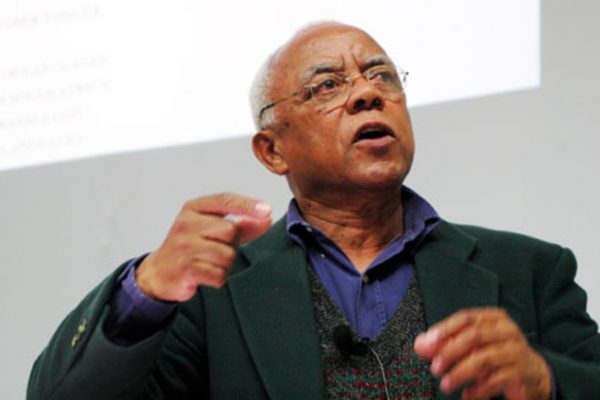It came as no surprise when, earlier this month, conservatives responded to a new desegregation initiative with the charge of social engineering.
Under Department of Housing and Urban Development (HUD) rules unveiled in Chicago on July 8, localities will have to show the federal government how they use its money to integrate housing. The goal is to improve the quality of housing in low-income areas and to encourage the construction of affordable housing in higher-income ones, ultimately leading to greater racial integration than existing law has achieved.
On cue, the American Enterprise Institute’s Edward Pinto told the New York Times, “This is just the latest attempt by HUD to social-engineer the American people.” He said the same thing the last time the Obama administration attempted to foster integration through HUD efforts, in 2013. Two years earlier, a Westchester County executive made the identical complaint when HUD withheld funds, claiming the county failed, in the department’s estimation, to demonstrate that it would “affirmatively further fair housing.”
While the new rules are fairly modest in scope, opponents of social engineering see an Oval Office in search of perfection. Arizona Representative Paul Gosar, who is leading the fight against the rules in the House, says the administration “shouldn’t be holding hostage grant monies aimed at community improvement based on its unrealistic utopian ideas of what every community should resemble. American citizens and communities should be free to choose where they would like to live and not be subject to federal neighborhood engineering.”
This conception of social engineering as an adjunct of utopianism goes back a long way, and considering the disastrous projects carried out under the aegis of utopian social engineering, contesting contemporary efforts of this type is not just understandable but wise. But while desegregation is indeed social engineering of a sort, it is not utopian. Rather, it is the “piecemeal” sort that Karl Popper isolated as fitting democratic work. The HUD rule is no more utopian than any law intended to improve living conditions in an attempt to achieve a safe and fair society.
To better appreciate the discontinuity between desegregation and the utopian social engineering any reasonable person should protest, it pays to look at the history. Though social engineering has been around since before the nineteenth century, it is strongly associated with trends in the second half of that period as well as first half of the twentieth—the eugenics movement in Europe and the United States, the mechanization of laboring bodies, and the consolidation of the bureaucratic nation-state.
The eugenics movement emerged from roiling late-nineteenth-century debate over evolutionary ideas inspired foremost by the work of Charles Darwin. Darwin’s theories were quickly bent to the service of political ideologies and became sources for new ones. Among those who took political succor from Darwin was his cousin, the polymath Francis Galton, who coined the term “eugenics” as “the science of improving the human stock.” Galton argued, “A man’s natural abilities are derived by inheritance under exactly the same limitations as are the form and physical features of the whole natural world.” In other words, just as plants and livestock could be bred for desirable traits—including mental traits—so too could people.
By this time, mass industrialization had brought human life in line with mechanized processes, adding potency to the idea that the human was a kind of clockwork that could be controlled through economic as well as bioligical rules. Though there was much dispute among individual thinkers over whether these rules were commensurable—whether social processes could have lasting impact on the biological mechanism, and whether that impact could be passed on to subsequent generations—both ideas were in wide circulation and found collective expression in the popular euthenics movement as well as in some strains of eugenics that took Lamarckian, rather than Darwinian, inheritance as their starting point. The goal of euthenics was to improve the conditions of human life, which seemed so desolated in the burgeoning slums of industrial capitals. The more ambitious aim of eugenics, celebrated in explicitly utopian terms, was to perfect mankind.
Galton’s unpublished novel Kantsayanywhere imagined an ideal eugenic future in which government bureaucrats would ensure that the fittest interbred and the weakest were prevented from poisoning the gene pool. The particular style of utopia fit Galton’s aristocratic sensibilities, but other eugenicists, such as the leftist Austrian biologist Paul Kammerer, envisioned utopias more suitable to their politics, which emphasized the possibility of elevating the proletariat through improvements of the gene pool rather than elimination of its deficits.
The eliminationist method was the only one employed on a mass scale, in U.S., Japanese, Canadian, and European sterilization programs and in the Third Reich, itself a utopian social engineering experiment. Communist totalitarianism, often viewed as the other major attempt at utopian social engineering in the twentieth century, provides another cautionary tale when it comes to technocratic attempts to perfect the “new man” according to the demands of state ideology. In that case, utopian social engineering was approached not through eugenics but through propaganda and violent suppression of political opposition, both of which were, of course, prominent in Nazi Germany as well.
It makes little sense to read desegregation policy in the same tradition as these projects, and not only because everyone can agree on their repugnance. Fundamentally, desegregation aims at improving the human environment rather than the human. This is a critical distinction; it places desegregation within the standard sphere of democratic policy reform rather than the totalitarian one in which the objective is to remake the human in the state’s image.
The hope behind the new HUD policy is far too humble to sate the utopian apetite. It is simply that integration will help individuals to better recognize the personhood of others from whom they have been divided and therefore to live together more peacefully and in a state of mutual care and respect. There is no attempt to change the nature of people—if there is such a thing—only to introduce them to each other so that oppression becomes more difficult both to pursue and to ignore.
Another reason to reject the accusation of utopian social engineering is that desegregation attempts to undo precisely that mistake—the utopian mistake of race and racism.
Race is not an inherent feature of people but rather a political and juridical invention reflecting and fostering a particular conception of human nature. It was created when light-skinned people met dark-skinned people and saw a chance to exploit their labor. The new, racialized human justified the unequal distribution of wealth and asserted the innate superiority and inferiority of certain groups defined by perceived physiological similarity. Over the course of centuries, politicians, religious figures, lawyers, scientists, business elites, and everyday people elaborated an ideology of racism under which racial differentiation was deemed morally right and coherent because white people and black people were different, thereby elevating an idiosyncratic and opportunistic claim about human nature to a place of natural, theological, and legal fact.
At the same time, this vision of the human delineated who would be allowed to have political influence and defined the conditions of freedom. When the founders of the United States spoke of government by “the people,” they saw no contradiction in the exclusion of slaves—and women—because such people could not, by virtue of the nature invented for them, be free. (Unpropertied white men, too, were often prevented from taking part in politics but because they were deemed dependent on owners and employers and therefore unable to exercise the freedom that was, literally, their birthright.)
Segregation as it exists in the United States today is not a function of law, but it is a function of race and its persisting ideology, a scheme of utopian social engineering that asserts the nature of the human and seeks a world in which the highest form of that nature is freest and most exalted.
None of this is to suggest that conservative politicians and think-tankers believe the racial order of slavery and colonialism is valid, though some might, wittingly or not, and yet consider themselves egalitarians. But to respond to attempts to undo that order—for that is what it means to oppose racism—with accusations of social engineering is to do its bidding.
The new HUD rules may not work. Given its recent record of demolishing and disinvesting from public housing, the agency doesn’t deserve the confidence of nonwhite and low-income Americans. The policy may be faulty according to its goals—one can certainly argue it doesn’t go far enough—implemented poorly, or so divisive that it cannot succeed. But for critics of utopian social engineering, there is no sound ideological reason to oppose desegregation.








